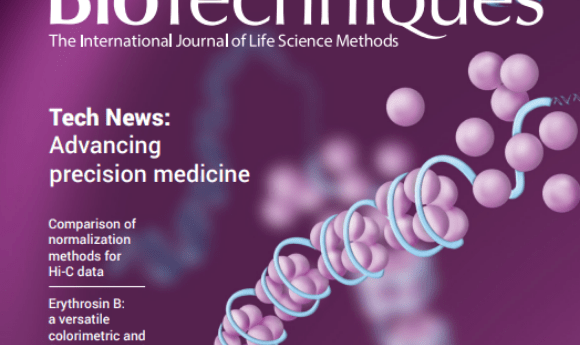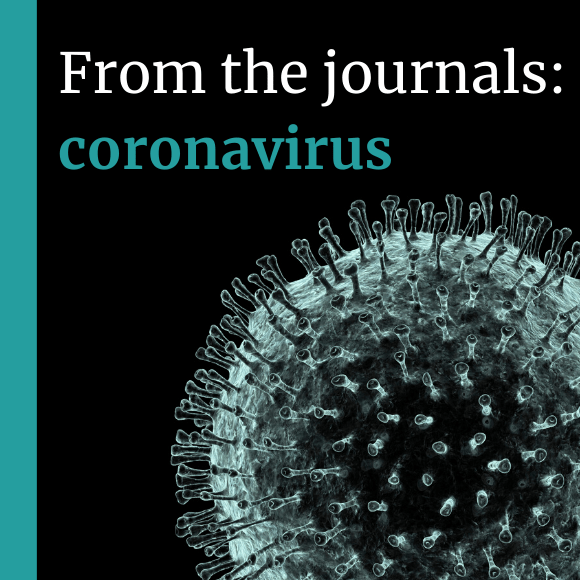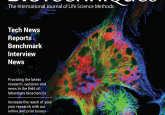What’s in store for the first BioTechniques quarterly journal edition?

We speak to Editor-in-Chief, Francesca Lake, to find out about must-see technique updates, research highlights and ground-breaking statements featured in the new quarterly issue of the BioTechniques journal.
You can check out the first quarterly issue free here.
Firstly, we’re curious. Why has the BioTechniques journal been updated to four quarterly editions?
A plethora of reasons actually! BioTechniques has changed a lot over the last few years – we’re publishing more journal content each month, and on-site we now have a variety of new features including expert opinion pieces, podcasts, interviews, event round-ups, webinars and panel discussions. As such, one reason for the new quarterly edition is to include our highlights of this fascinating content in our print edition, ensuring our print and digital edition subscribers don’t miss out on the content. Another reason is the environment – with this new format, we’ll be able to publish more content, but use less paper, plastic and delivery miles – it sounds impossible, but we’ve done it! I also personally feel this new version is more readable – while it contains the essential peer-reviewed methods and tools, the rest of the content is more… I don’t want to say ‘readable’, but you get my drift. As such, the issue can now be enjoyed in your break as well as utilized at the lab bench.
What key technique updates are must-sees?
This issue includes not one but three of our technology news features, covering precision medicine, T cells and cancer diagnosis. They are all excellent and I recommend a read (although full disclaimer, I wrote the one on precision medicine). We also have some really nice benchmark articles in this edition – for those unfamiliar, these are peer-reviewed updates to current methods and techniques. McEvoy et al. provide a tweak to improve library yield for NGS in tricky tumor samples with limited DNA availability. Another is by Tang and Gomer, who present an improved shotgun antisense method for generating knockdown mutants. There’s plenty more, too.
 From the journals: coronavirus
From the journals: coronavirus
Many publishers have made their coronavirus-related publications free to read online, including ours, Future Science Group. Here’s a brief overview of what’s available.
If you were to pick one ground-breaking statement from this issue, what would it be and why?
Oh, picking one is hard! Will you allow me two? We met with the past President of the American Society of Human Genetics Leslie Biesecker at last year’s ASHG meeting (15–19 October, Houston, TX, USA), discussing the issue of genetic exceptionalism. A snapshot of the interview we did with him appears in this edition, and in it he discusses how he defines the ‘success’ of genetics as it being infused into all biological and medical practice, but that exceptionalism – the belief that geneticists are different, stymies that. I agree with that philosophy and think it can be applied to plenty of scientific fields.
Another important statement in this issue came from Gaetan Burgio (Australian National University, Canberra, Australia), who wrote a thought-provoking opinion piece on the off-target effects of CRISPR. CRISPR and its challenges are much talked about and sometimes over-hyped, and I enjoyed his fresh reasoning that given technology advances, off-target effects are not such a concern, especially in some applications.
What are your favorite articles from this quarterly edition?
I really enjoyed putting this first issue together, there was so much of interest! The report from Webb et al. presented a particularly interesting method for the at-home collection of urine samples for prostate cancer detection. There is also a ‘Peek behind the paper’ interview with corresponding author Jeremy Clark (University of East Anglia, Norwich, UK) where he delves into why they created the method, and the impact they’re hoping it will have. I also enjoyed the report from Krähenbühl et al., which presents ELIMU-MDx, an open-source platform for the storage, management and analysis of diagnostic qPCR data. We’re seeing more and more software coming across the editorial desk, which is vital given that advances in lab methods are making storage and analysis ever more complex. While this type of research has historically been considered less ‘glamorous’, it’s vital and I consider it pretty fascinating.
What can we expect to see more of in the next edition and when will it be out?
I’ve already begun collating the line-up for the next edition, which will be out in June. It will, somewhat unsurprisingly, include content on COVID-19 – we’ll have a technology news feature covering the race to develop tests and vaccines, and a 60-second interview with Wyss Institute Founding Director Donald Ingber (MA, USA) who discusses organ-on-a-chip and the work the Wyss is doing with COVID-19 – you can get a sneak preview of this in our podcast with him. With the western blot recently turning 40, there will also be a couple of new techniques for that, as well as coverage of DNA and RNA isolation, CRISPR, PCR, 3D cell culture and the other usual features – it’ll be jam-packed, and I hope our readers will enjoy it!
Finally, I’d also like to highlight our cover competition – we’re accepting submissions of images for our December edition.



